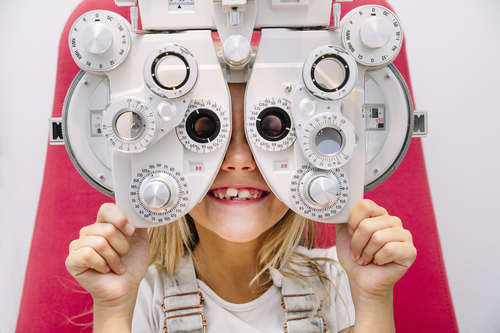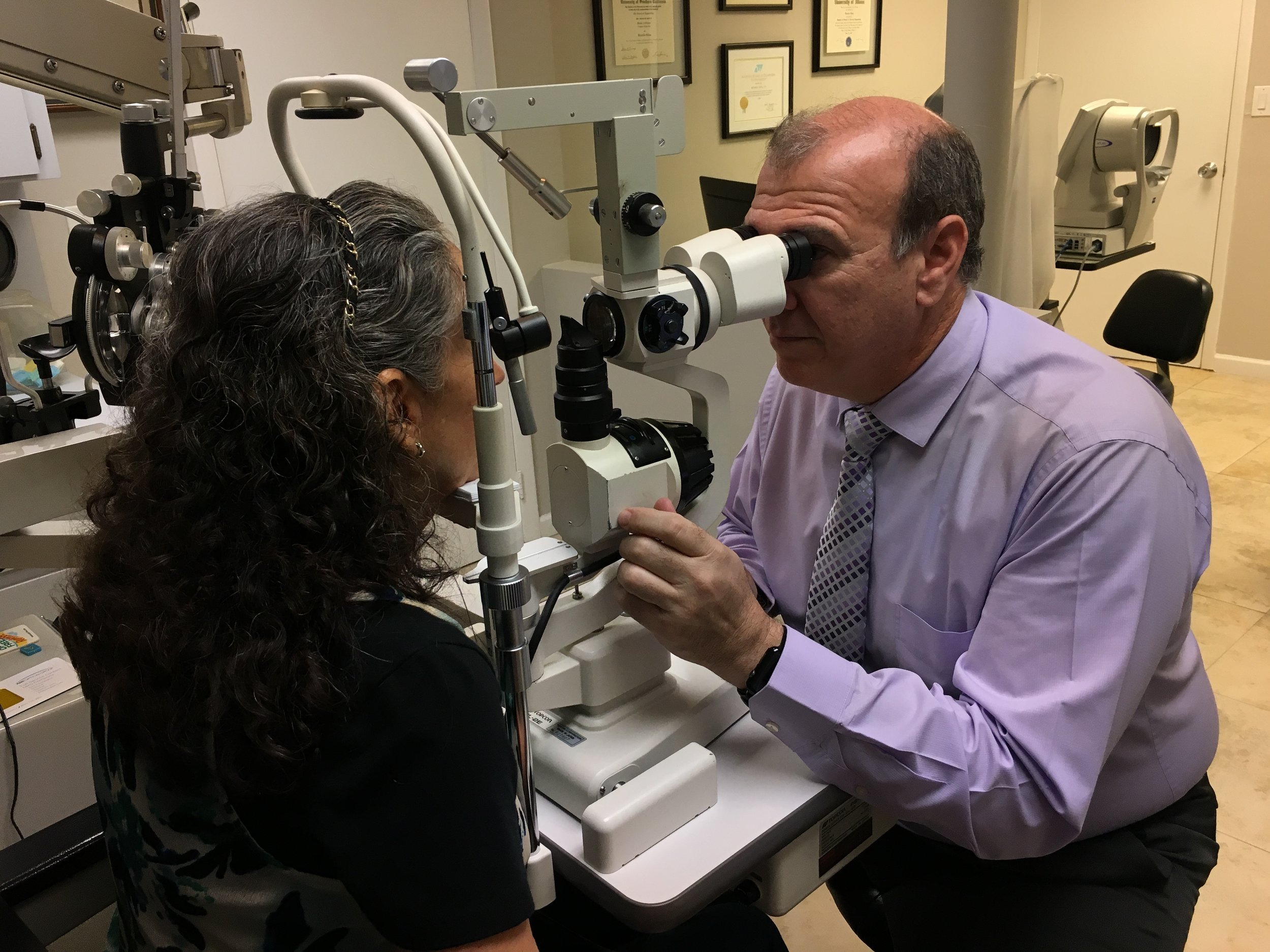Top Reasons to See an Optometrist Chino for Your Eye Health
Top Reasons to See an Optometrist Chino for Your Eye Health
Blog Article
Checking Out the Latest Technical Developments in Optometry and What They Mean for Eye Doctors
From the precision of Optical Coherence Tomography to the nuanced understandings offered by AI-driven analysis devices, these technologies are setting new requirements in individual assessment and therapy. As these developments penetrate the technique, optometrists are faced with the challenge of accepting these devices to boost person results.
Technologies in Diagnostic Devices
Progressing the area of optometry, advancements in diagnostic tools have changed the means eye care specialists assess and detect visual impairments and eye problems. The past decade has experienced significant technological improvements, enabling even more exact and extensive assessments. Optical Coherence Tomography (OCT), for example, gives high-resolution cross-sectional photos of the retina, permitting the very early detection of conditions such as glaucoma and age-related macular degeneration. This non-invasive imaging technique has ended up being indispensable in contemporary optometric method.
An additional trick technology is the intro of advanced corneal topography systems, which map the surface curvature of the cornea with precision. These tools are particularly advantageous for suitable call lenses and identifying corneal disorders. Additionally, digital retinal imaging has actually changed standard ophthalmoscopy, using comprehensive, breathtaking views of the retina that assist in extensive visual examinations.
The development of wavefront aberrometry has actually likewise been essential, making it possible for the evaluation of refractive errors with unequaled accuracy (Optometrist Chino). This innovation helps in customizing restorative lenses and enhancing medical results for refractive surgical procedures. Jointly, these analysis innovations empower optometrists to supply exceptional individual treatment, making certain early treatment and tailored treatment techniques, eventually improving visual health end results
AI in Individual Administration
Building on the foundation of sophisticated analysis devices, the incorporation of expert system (AI) in person monitoring represents a transformative jump for optometry. AI systems are progressively utilized to enhance efficiency, precision, and customization in patient care. By assessing large quantities of data, AI can recognize patterns and anticipate potential ocular problems, allowing optometrists to tailor interventions more effectively. This capacity is essential in handling persistent eye illness such as glaucoma and diabetic retinopathy, where early discovery and continual surveillance are essential.
In addition, AI-driven platforms facilitate streamlined patient communications and administrative procedures. Automated scheduling, digital appointments, and customized follow-up plans not just improve individual contentment but additionally maximize time management for specialists. These systems can triage patients based on the seriousness of their problems, making certain that those in crucial need get timely focus.
Moreover, AI boosts decision-making by offering optometrists with evidence-based suggestions and treatment paths. By incorporating data from electronic wellness records, AI tools offer understandings that educate scientific choices, decreasing the risk of errors and improving person outcomes. As AI proceeds to evolve, its function in client management will likely broaden, improving the landscape of optometric treatment.
Breakthroughs in Retinal Imaging
In the world of optometry, retinal imaging has observed remarkable technological improvements that are improving diagnostic capabilities and person care. Technologies such as Optical Coherence Tomography (OCT) and fundus digital photography have actually transformed just how eye doctors evaluate the retina and imagine.
Enhanced imaging techniques like OCT angiography are further refining diagnostic precision. This non-invasive strategy maps blood flow in the retina, offering essential insights right into vascular wellness without the demand for color injections. In addition, adaptive optics innovation is being incorporated into retinal imaging systems to remedy eye aberrations, providing unmatched image clarity. Such developments facilitate the recognition of min retinal changes that might indicate disease development.
Additionally, advancements in fabricated intelligence are augmenting retinal imaging by making it possible for automatic evaluation of huge datasets. These systems help eye doctors in identifying patterns a sign of pathology, thereby boosting diagnostic accuracy and performance. Jointly, these innovations are changing retinal imaging into a cornerstone of contemporary eye care, enhancing results and increasing healing possibilities.
Teleoptometry's Growing Role
Teleoptometry is progressively ending up being a crucial part of eye treatment, driven by advancements in digital interaction and analysis devices. As optometry embraces electronic makeover, teleoptometry assists in remote appointments, permitting optometrists to prolong their solutions past standard limits. This is especially useful in country and underserved locations where access to specialized eye treatment is commonly limited. By leveraging high-resolution video clip conferencing and progressed retinal imaging, eye doctors can conduct extensive eye tests from afar, guaranteeing timely medical diagnosis and treatment.
The assimilation of expert system (AI) additional boosts teleoptometry, allowing the evaluation of aesthetic information and aiding in the discovery visit here of eye problems such as glaucoma and diabetic person retinopathy. AI-powered formulas can swiftly interpret complicated imaging data, supplying eye doctors with important insights that reinforce medical decision-making.
In addition, teleoptometry sustains connection of treatment with smooth combination with digital health and wellness documents (EHRs), enabling optometrists to preserve extensive client histories. When consulting with different specialists., this makes sure that people obtain constant and personalized treatment also.
Regardless of these advantages, challenges remain, consisting of ensuring data protection and handling client expectations. Nonetheless, teleoptometry stands for a substantial stride towards even more easily accessible, reliable, and patient-centered eye care. As innovation progresses, its duty is poised to increase additionally.

Future Trends in Eye Care
A myriad of innovative fads is established to improve the future of eye treatment, driven by technical improvements and the advancing needs of individuals. One considerable trend is the integration of man-made intelligence (AI) in diagnostics, which promises to enhance the accuracy and performance of eye exams. AI formulas can evaluate huge quantities of information from retinal photos, possibly detecting problems like diabetic retinopathy and glaucoma earlier than typical approaches.
Additionally, customized medication is gaining grip in optometry, with genetic screening informing customized therapy strategies. This strategy intends to enhance client results by customizing treatments to individual genetic accounts. Wearable modern technology, such as wise get in touch with lenses, is additionally imminent, supplying real-time monitoring of intraocular stress or glucose levels, therefore offering continuous insights right into systemic and eye wellness.
The adoption of augmented fact (AR) and digital fact (VR) in training and client education is one more emerging pattern. These technologies use immersive experiences that can improve understanding and skills both for people more and eye doctors. As these fads advance, optometrists must remain abreast of technical advancements to give cutting-edge treatment, making sure improved client end results and contentment in the vibrant landscape of eye treatment.
Verdict

Collectively, these diagnostic innovations encourage optometrists to supply premium patient treatment, ensuring early intervention and tailored therapy methods, eventually improving visual wellness end results.

As these technologies continue to advance, optometrists must adapt and include them into method, eventually enhancing workflow effectiveness and raising the requirement of eye care supplied to individuals.
Report this page